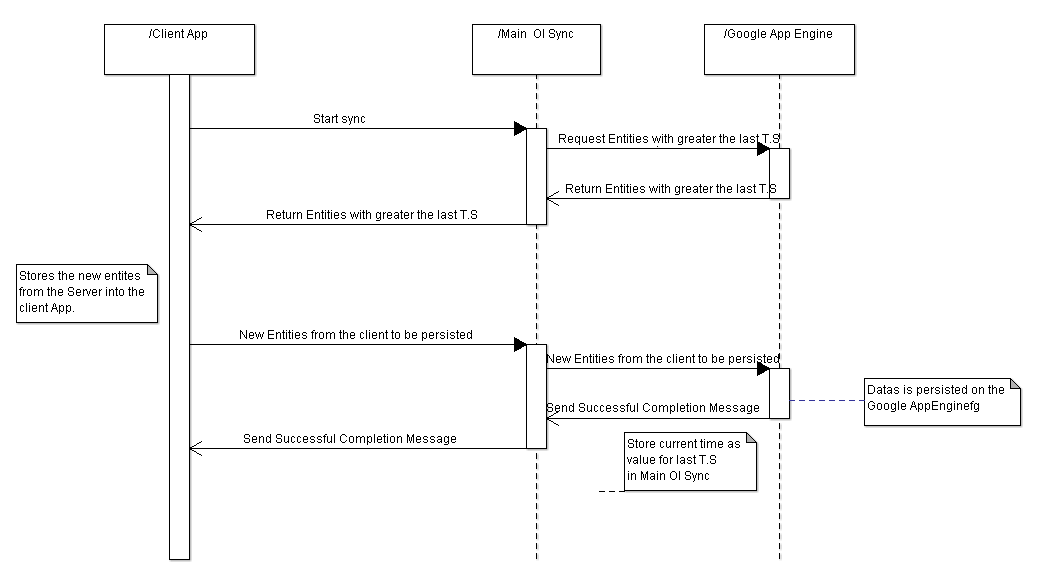OI Cloud Sync Sequence Diagram
Vettukal Vincent Mathew
Friedger Müffke
Please use a new package in OI Notepad.
Cheers
Friedger
--
You received this message because you are subscribed to the Google Groups "OpenIntents" group.
To view this discussion on the web visit https://groups.google.com/d/msg/openintents/-/JJ-G5a6DFogJ.
To post to this group, send email to openi...@googlegroups.com.
To unsubscribe from this group, send email to openintents...@googlegroups.com.
For more options, visit this group at http://groups.google.com/group/openintents?hl=en.
--
OpenIntents UG (haftungsbeschränkt)
Suarezstraße 41
14057 Berlin
tel:+49 30 60982220
mailto:in...@openintents.biz
enum:+493060982220
Vertretungsberechtigter Geschäftsführer: Friedger Müffke
Registergericht: Amtsgericht Berlin (Charlottenburg)
Registernummer: HRB 118597
Ust-IdNr: DE265992701
Vettukal Vincent Mathew
On Tuesday, May 29, 2012 3:55:53 AM UTC+5:30, Friedger Müffke wrote:
Can you add the process what you want to do about the possible time difference between server and client?
Please use a new package in OI Notepad.
Cheers
Friedger
2012/5/28 Vettukal Vincent Mathew <vett...@gmail.com>
hi,This is my first attempt to make any UML diagram to try to show how I plan to implement the Synchronization process. The lastTS is the time of the last sync done by an application using OI Sync it is stored inside the OI Sync. Below is the diagram..And should I make a just different java Class or a separate package in OI Notepad for synchronization process.Thanks
--
You received this message because you are subscribed to the Google Groups "OpenIntents" group.
To view this discussion on the web visit https://groups.google.com/d/msg/openintents/-/JJ-G5a6DFogJ.
To post to this group, send email to openi...@googlegroups.com.
To unsubscribe from this group, send email to openintents+unsubscribe@googlegroups.com.
For more options, visit this group at http://groups.google.com/group/openintents?hl=en.
aap
Vettukal Vincent Mathew
I'm not sure it is worthwhile to maintain separate sets of UIDs for local and remote identification of the same object.
I came with this design..
Modification of a Note. Say note with _id=2 is modified.
At the time of next sync the rows whose value is not equal to 2600(LastSyncTime) is selected and sent to the server.
After the sync
At the time of sync the new entities from the server is fetched, by checking which all entities are greater than LastSyncTime. They are checked with Main OI Sync DB to check whether they already exist on local Client DB, to decide whether modification is needed or creation of a new row on the local DB.
The conflict will be detected when the same entity(with same AppEngineId) is taken from local Client for updation to the server and also it has been fetched from AppEngine.
aap
aap
Friedger Müffke
To view this discussion on the web visit https://groups.google.com/d/msg/openintents/-/Kf02ASSPSdoJ.
To unsubscribe from this group, send email to openintents...@googlegroups.com.
Peli
At the next update, one only needs to compare items that have been modified after the "last synchronization" time, because all older entries are guaranteed to be identical. (As mentioned, the "last synchronization" time has to be stored for each client or each server separately, but that may just be a handful of entries.)
aap
Most of those use cases still only involve one sync source per list but some involve more than one. I certainly am not insisting that we need to support all that this summer, but I hope we can choose a design that will be extensible in that direction.
-- Aaron
aap
Peli (OpenIntents)
The unison trick sounds clever. That is something that we didn't have in the discussion yet.
But it also sounds like something that can be implemented later, on top of a basic merging solution with the timestamp, simply by implementing a more clever client. The server wouldn't have to change and would not need to keep the old state.
(Alternatively the client would stay simple and the server would do the clever merging, but the way data would be stored on the server speaks against this.)
To view this discussion on the web visit https://groups.google.com/d/msg/openintents/-/5iO3zEWNRVEJ.
To post to this group, send email to openi...@googlegroups.com.
To unsubscribe from this group, send email to openintents...@googlegroups.com.






